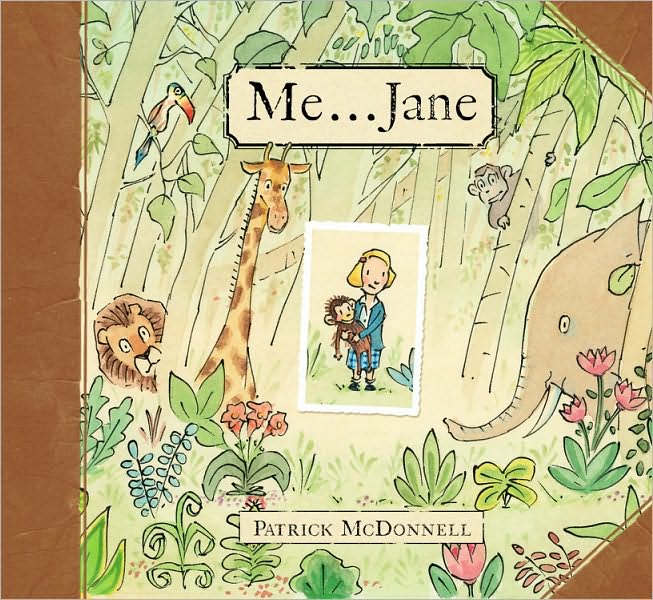
 Patrick McDonnell's picture-book debut, The Gift of Nothing, starred the characters from his comic strip, Mutts. Mooch the cat gives Earl the dog a present that can't be bought: friendship. In a strip he created on June 5, 2007, striped cat Jules explains how he gets through his "compassion fatigue": "My autographed copy of Dr. Jane Goodall helps," says Jules. The Jane Goodall Institute wanted to showcase it on its Web site, which led to McDonnell and Goodall's eventual meeting.
Patrick McDonnell's picture-book debut, The Gift of Nothing, starred the characters from his comic strip, Mutts. Mooch the cat gives Earl the dog a present that can't be bought: friendship. In a strip he created on June 5, 2007, striped cat Jules explains how he gets through his "compassion fatigue": "My autographed copy of Dr. Jane Goodall helps," says Jules. The Jane Goodall Institute wanted to showcase it on its Web site, which led to McDonnell and Goodall's eventual meeting.
With the economy and eloquence of a poem, McDonnell creates a picture-book biography of the seeds planted in Goodall's childhood that led to her life's work. "Jane had a stuffed toy chimpanzee named Jubilee," the book begins. A pair of adult arms breaks in from the right margin to place Jubilee in young Jane's hands. This is the only time the artwork depicts the physical presence of any other human being. Ever after, it's just Jane and Jubilee. In the ink-and-watercolor illustrations, McDonnell endows Jubilee with as much personality as Jane does. The chimp sits next to Jane at her desk, and pokes his head through the hatch of Grandma Nutt's chicken coop. Together, girl and chimp hide in the coop and observe a chicken laying an egg. "It was a magical world full of joy and wonder, and Jane felt very much a part of it," says the text. As Jane and Jubilee lie on their backs in the green grass, the chicken and chicks observe them.
McDonnell repeats this theme of Jane and Jubilee completing a circle with nature. After a scene of Jane and Jubilee at her desk, McDonnell presents a reproduction of a spread from Jane's childhood notebook. Her detailed drawings and list of questions reveal her close observation and capacity for awe. McDonnell's build to the book's climax sneaks up on you with its emotional intensity: in a vignette on the right-hand page, Jane sits in a tree next to Jubilee, reading books about Tarzan of the Apes ("in which another girl, also named Jane, lived in the jungles of Africa"). The pair appears in the identical situation in the next spread's vignette, except that the foliage on their tree has changed, and animals from Africa roam below ("Jane dreamed of a life in Africa, too...."). By the next page turn, a lush African landscape overtakes the entire spread, as Jane and Jubilee swing from vines, and an actual chimpanzee watches them from the treetops. Then it's back to her real-life routine. Jane falls asleep next to Jubilee, and on the next page, a young woman with a signature golden ponytail "awake[s] one day..."--for the first time without her childhood chimp companion--"her dream come true," and McDonnell ends with a photograph of Goodall reaching toward a real chimpanzee. The subtle layering of words and images make that moment of connection feel predestined.
Readers who go on to explore other biographies about Goodall, including her own writing, will discover how faithfully McDonnell has adhered to the facts of her childhood. The formation of the Alligator Society (from which the notebook reproduction is taken) was just one early indicator of her respect for nature and what would become a lifelong dedication to its preservation. They will also come to discover how impossible Goodall's dream might have seemed--for a woman in her era to pursue any career, but particularly a life alone in the bush. What McDonnell gives children with this book is a portrait of a life's work that began in childhood play. He shows young people that their own interests deserve to be pursued and explored, and that they lead to a life filled with meaning.--Jennifer M. Brown

